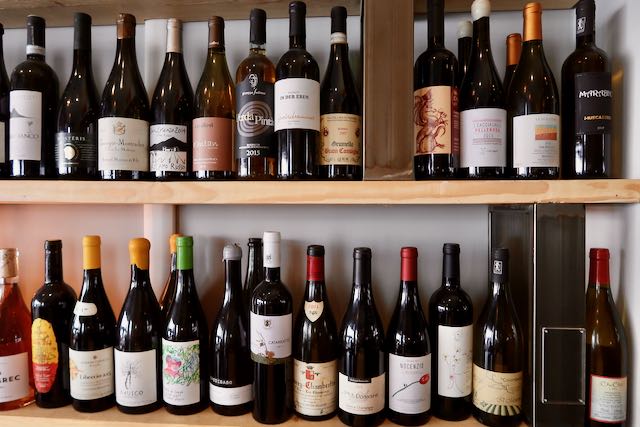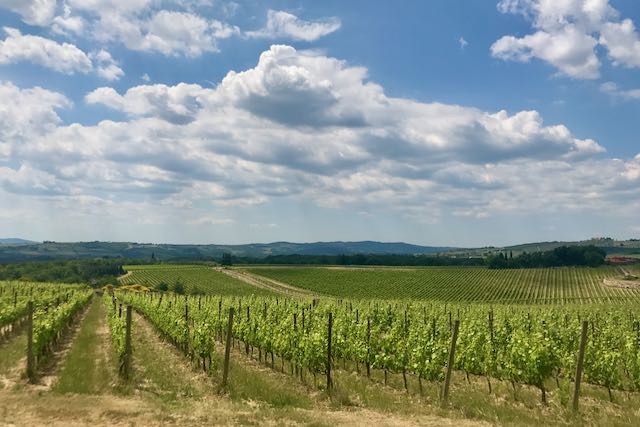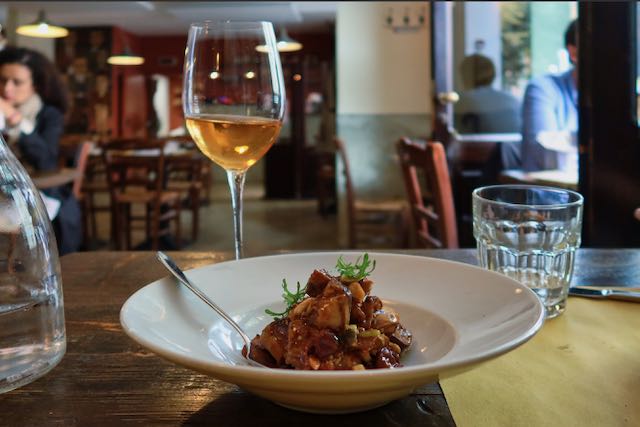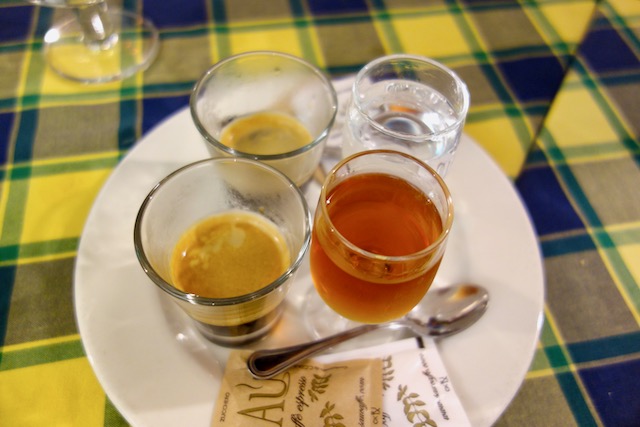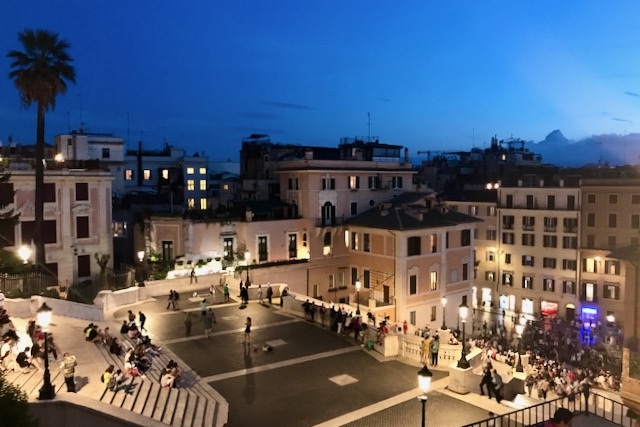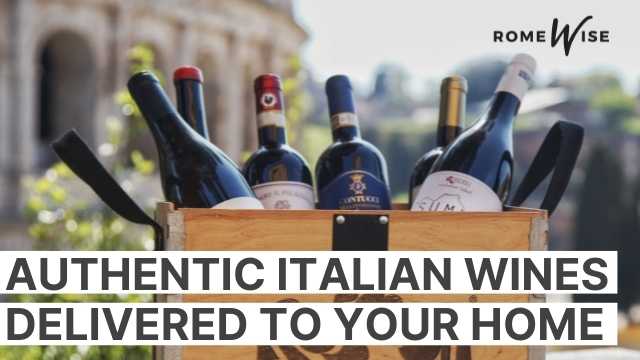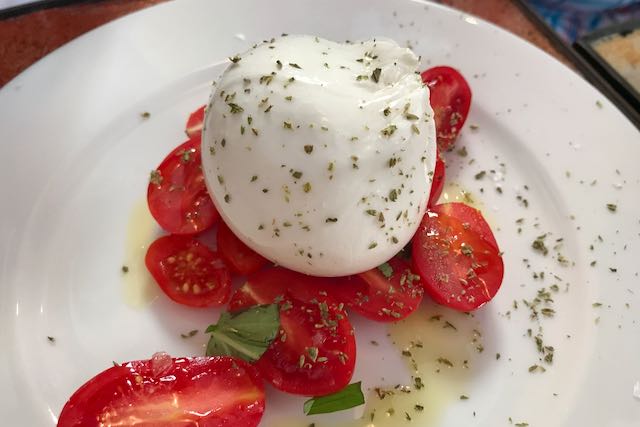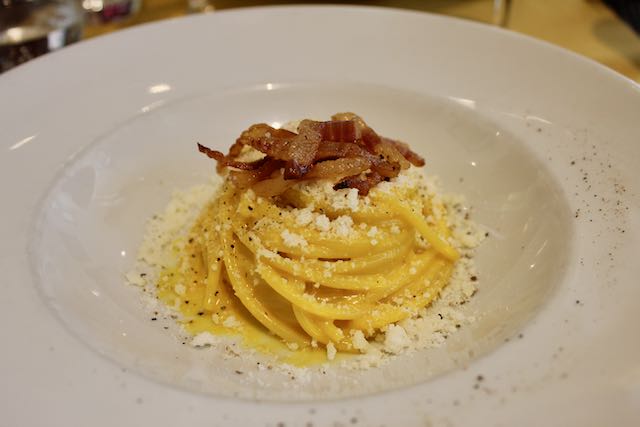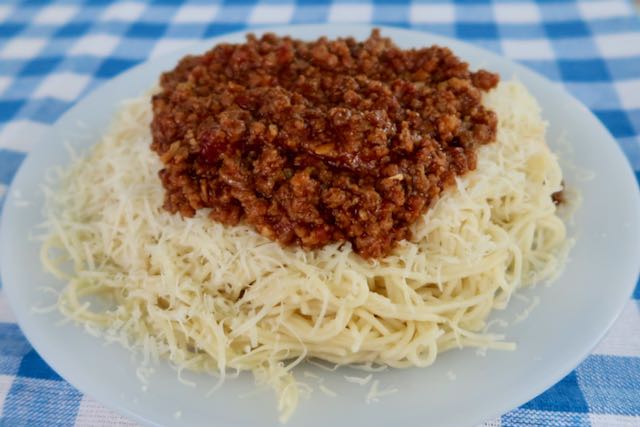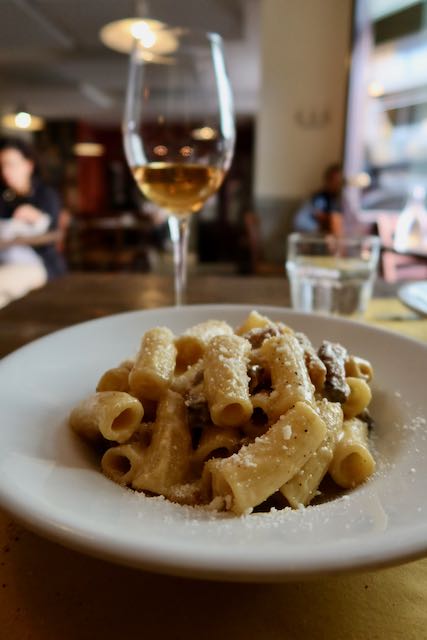- Sign up & get a FREE ebook Subscribe NOW!
- Romewise Home Page
- Drink in Rome
- Guide to Italian Wine
Beginner's Guide to Italian Wine and How to Navigate a Wine List
Looking for Italian wine information?
You've come to the right place.
If, like many people, you love wine and have visited Italy for its wine, this guide to Italian wine is for you!
Back home you have your favorite bottles and feel confident enough to order from a wine list.
But in Italy, you're completely lost.
Wine lists are often books, or you've never heard of the grapes, or the wine is named for an unfamiliar place.
In any case, you feel a long way from home without the usual suspects of Cabernet Sauvignon, Merlot, Chardonnay, Sauvignon Blanc, and Pinot Noir.
Before you ask for a glass of something familiar, keep reading this guide to good Italian wine to understand a little more about Italian wine culture and how to feel confident in ordering wine.
Guide to Italian wine and Italy wine culture
If you want to understand a bit about Italian wines, the different grapes, how to navigate a menu, and what wine to order with your food in Italy, you'll find it all here with this guide to Italian wine:
- A very brief history of wine in Italy
- Tips on ordering wines in Italy
- Navigating a wine list in Italy
- Wine vocabulary words
- Italian wine recommendations
- What wine to order with Roman food
No need for snobbery - Wine is for everyone
Dionysus rituals involving wine in ancient Greece were linked with women and liberation, whereas by the time of Bacchus in Rome, wine had become available to everyone - rich and poor, and men and women alike.
 Hellenistic mosaics discovered close to the city of Paphos depicting Dionysos, god of wine - Georgeg, wikimedia commons, public domain
Hellenistic mosaics discovered close to the city of Paphos depicting Dionysos, god of wine - Georgeg, wikimedia commons, public domainThis tradition of wine being a 'democratic' drink still holds true today.
While wine drinkers can often be associated with snobbery, this isn't something you need to worry about while here in Italy, as this guide to Italian wine will show.
What makes Italy so ideal for wine making
As far back as the ancient Greeks, Italy was referred to as enotria, or the 'land of vines'.
The Mediterranean climate is ideal for growing grapes with an abundance of sun, unique and varied soils, and lots of mountains and hills that offer ideal sun exposure, ventilation, and soil drainage.
Every single region in Italy is capable of producing great wines, and does!
Italy leads the world in wine production, producing around 54 million hectoliters of wine annually.
That's the equivalent of nearly 7 billion standard size wine bottles, every year - one for each person on the planet!
🥂 A Culinary Adventure in Rome 🥂
Indulge in Rome’s flavors! This experience combines a hands-on cooking class, and a walking tour of Rome for an unforgettable culinary adventure.
Italy's long history of wine making
Researchers recently found grape seed resin in clay vases in a Sicilian cave.
This would indicate that Italy has been producing wine since 4,000 BCE.
With nearly 6,000 years of wine making, Italy has had a long time to experiment, understanding which grape is suitable to each area, as well as massale or mass selection, where you select individual vines which are giving you ideal characteristics or are the strongest, cultivating vines, meaning a guide to Italian wine is not always straightforward!
Why terroir matters
You'll note that many 'Old World' wines are labeled by a place, whereas more 'New World' wines are labeled by a variety.
This was more of a marketing decision, as it was easier to memorize a couple handfuls of grapes versus thousands of places.
As a result, grapes have often become inextricably linked with specific territories.
This is why wines are commonly named for places, as opposed to the grapes themselves, as it's the territory which gives rise to the flavors and aromatics in each grape.
Planting Chardonnay in Sicily versus the Alto-Adige will give you two completely different results, so naming the wine Chardonnay wouldn't give much of a clue for what would be in your glass.
On top of this, Italy is famous for its biodiversity, with about 1,800 different grape varietals and over 150,000 licensed winemakers - so don't expect to recognize all of them!
Explore and have fun with the help of this guide to Italian wine for beginners!
Disclosure: If you make a purchase through a link on this page, I may receive a small commission - at no extra cost to you. Thank you for supporting my site!
Guide to Italian Wine - Tips on ordering wines in Italy
One of the most important things to remember in Italy is that most Italian wines are food wines.
They are generally higher in acidity which is great for stimulating your palate, but on their own, they may feel harsh, sour, or sharp.
Don't judge the wine until you've tried it with a bite of food.
Here are a few tips, recommendations, and suggestions for ordering wine and being a wine drinker in Italy.
- Pairing is fundamental. In Italy, you usually choose your wine after you make your menu selection. Wine and food are considered one experience here, so if you aren't sure how to pair, that's what sommeliers are for!
- Drink local from artisan producers. When in doubt, ask for something local to try. First, because regional wines and foods have been 'naturally selected' over time to work with each other. Second, because it shows your sincere interest in the culture of the area - everyone loves to show off something about their territory. While you may be more comfortable with the well-known Cabernet, Merlot, Chardonnay, Sauvignon Blanc, Pinot Noir, and other familiar grapes, just know these are French grapes so aren't indigenous to Italy.
- Ask for help. Often your curiosity will be rewarded and a sommelier may let you sample some wines which are already open, so they can better understand your tastes. Try using any wine-related vocabulary you know to help the person serving you to make a suggestion, or let them make a selection which will pair properly with your meal.
- If you want to explore beyond local wines, know that white wines from the North of Italy will generally be more acidic, lower in alcohol, and lighter in body. From the South, where the climate is warmer and the grapes ripen more easily, you'll generally find fuller bodied, more fruit-forward, expressive wines.
- Don't get caught up in the IGT, DOC and DOCG classifications. The classification system here is not always as reliable as it is in France. Even a table wine can be super impressive - they just aren't following the rules for their region. It often happens that we hear someone loves one Chianti Classico and hates another - yet both are from the same DOCG, or you might just not like Sangiovese which is the main grape they use to make Chianti Classico. Regions, not winemakers, are awarded status, which means you can still be a bad winemaker in a DOCG region.
- Don't be afraid to risk trying something new and unfamiliar. Italian wines are generally affordable so if you mess up, it won't hurt your wallet too badly.
Disclosure: If you make a purchase through a link on this page, I may receive a small commission - at no extra cost to you. Thank you for supporting my site!
Guide to Italian Wine - Navigating a wine list in Italy
Most often if you're at a restaurant, rather than a more simple trattoria, you'll have many more options to choose from than just typical local wines.
Here are some common regions you'll see on a larger list, and some of their associations:
Tuscany/Toscana wines
Chianti, Chianti Classico, Vino Nobile di Montepulciano and Brunello di Montalcino.
These are all Sangiovese-dominant wines, but from different regions, with different vinification and aging techniques.
Sangiovese is often acidic so you'll want some salami, hard cheese or pork to pair with these wines.
If you're doing a Fiorentina steak - go with a Brunello for it's bold, rich nature.
For most pork dishes, a Chianti or Chianti Classico should do.
The denomination for Chianti is extremely large so the wines may taste very different, but Chianti is an essential inclusion in any guide to Italian wine.
You will also often see Super Tuscans which are wines produced under the IGT label, often with international grapes like Cabernet, Merlot, Syrah etc, not permitted in high percentages for the DOC/DOCG wines.
These wines tend to be 'safer choices' if you're not comfortable going outside your comfort zone of New World wines from CA, Australia or South America.
Piedmont/Piemonte wines
Barolo, Barbaresco and other Nebbiolo based wines have come to dominate the regional offerings.
Nebbiolo is one of the most complex grapes for wine enthusiasts to try.
On the lighter and more approachable side, you can opt for a Barbera which is a great, afforable and versatile food wine or try a Dolcetto which is also simple, approachable and great for pizzas and appetizers, all good Italian red wines.
Sicily/Sicilia wines
Etna Rosso and Etna Bianco are two examples of wines coming from the volcano, giving you the ability to taste the terroir.
Often the red wines have a light charred/smokey taste to them, and the whites from volcanic areas tend to be very minerally and balanced.
There is also Nero d'Avola, a fruity, fresh and acidic red wine from southern Sicily.
Fruili Venezia Giulia wines
If you like natural wines or orange wines, this region is famous for them.
Orange wines are simply a white wine vinified like a red wine, meaning skin contact or maceration, giving a higher presence of amber color, tannins and mouth-feel of a red wine.
Many of the white wines from this region are very aromatic.
Veneto wines
Veneto wines are for lovers of big, rich, powerful, reds.
You'll find Amarone or the slightly lighter and more fruiter Valpolicella Ripasso.
Veneto is also known for the more ubiquitous Prosecco.
Guide to Italian Wine - Some helpful vocabulary words to learn to describe wine in Italy and elsewhere
- Acidic - an acidic wine makes you salivate immediately and you'll often sense it on the side of your tongue. You may sometimes use the words sour or sharp.
- Tannic - tannins are most often found in red wines and have a sandpaper, astringent, drying sensation on the palate. You may even say it feels gritty or gives you the sensation of cotton mouth.
- Bitter - bitter tastes were often associated with poison so our palate has naturally learned to reject them unless we train it differently. Bitterness will often produce an unpleasant, harsh, sharp feeling on the palate.
- Dry vs. sweet - dry just means a wine without the presence of any remaining residual sugars. Often people will smell fruit on the wine and assume it will be sweet, but a wine can be dry on the palate but sweet in the nose.
- Light vs full-body - this will most often be sensed by the level of alcohol present in the wines. Wines over 14% in alcohol will feel more full-bodied, 12.5-13.5% as medium-bodied, or under 12.5% as light-bodied.
- Concentration and extraction - these are the words dedicated to wines which have deep colors and pull more fruit out of the wine. Most wines in Italy will not tend to be highly extracted or concentrated, with some exceptions like Amarone, some Primitivo and others made specifically for the US market.
- Oaky or aged in oak - wines aged in barrique barrels which usually soften, smooth and round out a wine on the palate. Often they are associated with aromas of vanilla, wood, coconut, caramel and sweetness.
Guide to Italian wine - Some Italy wine recommendations for all tastes
Sparkling wines
- If you like softer and fruiter , go for Prosecco, ideally from the Valdobbiadene or Cartizze area for the best starter wine.
- If you prefer Champagne but want to drink Italian, try Franciacorta, Italy's sparkling wine region in Lombardy making wines in the same method as Champagne.
- And for a dessert wine, try Moscato d'Asti - especially with tiramisù!
Ready to plan your trip?
Book your train
Planning to travel between cities in Italy and other parts of Europe?
Use Trainline to see all the different options available across the different rail companies.
Find your hotel
Find your perfect place to stay in Rome.
Use Booking.com to choose between hotels, guesthouses, and self-catering apartments in neighborhoods throughout the Eternal City.
Buy your TurboPass
Purchase the convenient Turbopass and visit all of Rome's top attractions including the Colosseum, Pantheon, and Vatican.
With one handy pass, it's all included.
White wines
- If you prefer crispy and fresh, try wines from the Alto-Adige. Some of the best white wine for beginners comes from the north of Italy.
- If you prefer bold, more full bodied wines, try Timorasso, Etna bianco.
- If you like more minerally-driven, well-balanced whites, try wines that come from volcanic soils.
Red wines
- If you love terroir-driven wines, drink an Etna Rosso to feel like you are tasting the volcanic soils.
- If you love full-bodied and dry, go for a Barolo or Barbaresco.
- If you like big and bold, with a pinch of sweetness, Amarone or maybe even an Aglianico (Taurasi).
- If you like Zinfandel or slightly softer/fruitier wines, try Primitivo.
Local wines to try in Rome
If you're reading this guide to Italian wine in Rome and want to drink something truly local:
- Go for Cesanese for a red
- Try a Malvasia or Trebbiano for the whites.
For those wanting a more unusual experience
And if you are more of a wine geek or like more extreme wines - try the orange wines from Fruili-Venezia-Giulia (orange just means a white wine with skin maceration, not made from oranges) or ask for a local natural wine.
Looking for real, authentic Italian wine back home?
Look no further!
The Roscioli Italian Wine Club delivers worldwide only the best organic Italian wines in collections curated by the experts at Roscioli in Rome.
Find out more from Lindsay Gabbard, co-founder of the Roscioli Italian Wine Club here:
Subscribe today and save 25€ on your first payment with code ROMEWISE - click here:
Guide to Italian Wine - Some local Roman dishes and wine pairings
When in Rome, try some of the local wines with Roman dishes.
- Cacio e Pepe - Cesanese, nothing too high with tannins
- Carbonara - Franciacorta or a Pinot Bianco
- Amatriciana - Cesanese
- Pecorino cheese - White wine from Orvieto or Trebbiano
- Saltimbocca - Trebbiano, Greccheto, Malvasia
- Coda alla vaccinara - Sangiovese (Nobile di Montepulciano) or Cesanese as a local option
It's very difficult to generalize, and often the wines we pair with these dishes at Rimessa Roscioli are very specific or niche pairings, like Schioppettino with Cacio e Pepe.
Every grape will show very different expressions depending on where it's from and how the winemaker vinified it.
This is why letting the experts make suggestions can really help!
Interesting local wine producers in the Lazio region
Alberto Giacobbe - makes one of the best expressions of Cesanese
Damiano Ciolli - a staple in the region - his wife speaks english for anyone who wishes to do a winery visit
San Giovenale - Habemus is a synthesis of the best of Italy and CA
Casal Pilozzo - his villa was once lived in by Tyrone Power and Orson Welles and the cellar dates to ancient Rome times.
Andrea Occhipinti - wonderful Lazio wines
Ribelà - for more extreme natural wine lovers
Rimessa Roscioli - Lindsay's story
Lindsay Gabbard wrote this guide to Italian wine.
Food and wine lovers may already be familiar with Roscioli and Rimessa Roscioli.
If you don't, you need to be!
Rimessa Roscioli changed my life 6 years ago because it completely opened up my mind to what wine can really be about - learning, stories, history, proper pairing and human connections.
Nearly all our servers are also sommeliers, they all speak english and are thrilled to speak about wine, the story of where it comes from and let you learn about each wine in a very casual but meaningful way.
Plus we have nearly 60 wines by the glass with our Coravin wine pouring system!
Between Roscioli and Rimessa Roscioli, we have nearly 60,000 wine bottles in our cellar - most from artisan winemakers from all over Italy, as well as some French and other countries.
It's a place for both everyday wine lovers and for connoisseurs to come enjoy some of the best Roman dishes along with a unique and memorable bottle of wine.
Have fun, explore, get lost, learn, be open, and most of all don't be afraid or expect to understand it all!
You are always welcome to like what you like, but trying something new is great to spice up any routine, which over time will often have diminishing results.
Wine is as common as water on the table here, and its main job is to enhance and elevate a social experience, so I hope my guide to Italian wine has helped you have a fantastic experience! Buon appetito!
Romewise's Top Travel Resources
Ready to book your trip to Rome? Take a look at these helpful links to companies we use and trust:
- Keep your travel spending simple with the Wise card, which removes all the worry about exchange rates and high transaction fees all over the world
- Search for and book your perfect accommodation
- Our complete guide to what to pack for Rome
- The number one travel accessory, a multi-point travel adapter and voltage converter
- Browse a huge range of tours in Rome and beyond
- Experience unique tours and special access to Rome's most popular sights
- Protect yourself with comprehensive travel insurance
Within this post there are some affiliate links for products and services. For more details about our affiliate policy click here.
Get your 100% free Rome trip planner now!
Simply sign-up today for our free newsletter and get the Romewise Quick Start guide to Rome:
We are committed to respecting your data. Click for our Privacy Policy.
Comments? Questions? Suggestions?
Please come over to the private Romewise Facebook group and join in the conversation.
You will often find me there, happy to answer your questions / comments!
You will also meet other Rome lovers and experts, too.
What are you waiting for?
- Romewise Home Page
- Drink in Rome
- Guide to Italian Wine

